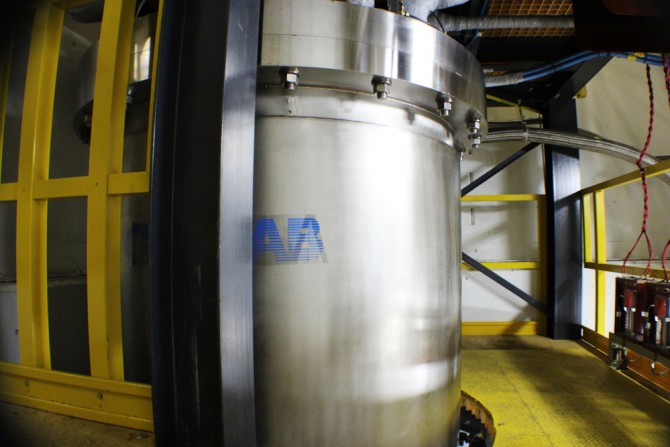‘Strange metal’ superconductors just got stranger
By Kristen Coyne
High-temperature superconductors have remained a scientific mystery for more than 30 years. Their electrical resistance, which increases linearly with temperature, has been particularly puzzling, spawning hundreds of theories.
Research conducted at the National High Magnetic Field Laboratory (MagLab) has discovered that the electrical resistance of a class of superconducting materials called cuprates (copper oxides) is also linear in applied magnetic fields, all the way up to 100 tesla.
“This discovery sheds new light on the phenomenon of ‘scale-invariance,’ which is thought to lie at the heart of high-temperature superconductivity and many other strongly correlated electron problems in modern physics,” said Brad Ramshaw, assistant professor of physics and a co-author on the study. Scale-invariance refers to materials that have no intrinsic energy scale, no “background” energy. The only energy scale that determines their measured properties is that which is applied, such as thermal energy when the metal is heated.
The study, “Scale Invariant Magnetoresistance in a Cuprate Superconductor,” was published Aug. 2 in Science. The senior author is Arkady Shekhter, physicist at MagLab; Ramshaw developed the experimental technique for taking electrical measurements in the 100-tesla magnet at Los Alamos National Laboratory in New Mexico.
The international team of scientists found that cuprates carry current differently than conventional metals such as copper. The research adds new meaning to their nickname: “strange metals.”
Cuprates are high-temperature superconductors that can superconduct at relatively warmer temperatures than conventional, low-temperature superconductors. Although scientists understand the physics of low-temperature superconductors, exactly how electrons travel through high-temperature superconductors remains the biggest mystery in the field.
For their research on the cuprate lanthanum strontium copper oxide (LSCO), the team focused on its normal metallic state, from which superconductivity eventually emerges when the temperature dips low enough. At the MagLab’s Pulsed Field Facility at Los Alamos, the researchers put LSCO in a very high magnetic field, applied a current to it, then measured the resistance.
The resulting data revealed that the current cannot, in fact, travel via conventional quasiparticles (electrons carrying an electric current), as it does in copper or doped silicon. The normal metallic state of the cuprate, it appeared, was anything but normal.
Scientists have known for some time about an intriguing behavior of LSCO: In its normal conducting state, its resistivity changes linearly with temperature. In other words, as the temperature goes up, its resistance to electrical current goes up proportionately. This is not the case in conventional metals.
The team tested LSCO resistivity using magnetic field as a parameter instead of temperature. They put the material in a very powerful magnet and measured resistivity in fields up to 80 tesla; a hospital MRI magnet, by comparison, generates a field of about 3 tesla.
They discovered another case of linear resistivity: As the strength of the magnetic field increased, LSCO’s resistivity went up proportionately.
The fact that the linear-in-field resistivity mirrored so elegantly the previously known linear-in-temperature resistivity of the cuprate is highly significant, Shekhter said. “Usually when you see such things, that means that it’s a very simple principle behind it,” he said.
The finding suggests the electrons seem to cooperate as they move through the material. Physicists have believed for some time that high-temperature superconducting materials exhibit such a “correlated electron behavior” in the superconducting phase, although the precise mechanism is not yet understood.
But this new evidence suggests that LSCO in its normal conducting state may also carry current using something other than independent quasiparticles – although it’s not superconductivity, either. What that “something” is, scientists aren’t yet certain. Finding the answer may require a whole new way of looking at the problem, said Shekhter.
The new research raises plenty of questions and some tantalizing ideas, including ideas about the fundamentally different way in which resistivity could be controlled in cuprates. In conventional metals, explained Shekhter, resistivity can be controlled in multiple ways; imagine a set of dials, any of which could adjust that property.
But in cuprates, Shekhter said: “There is only one dial to adjust resistivity. And both temperature and magnetic field, in their own way, access that one dial.”
Odd, indeed. But from strange metals, one would expect nothing less.
Kristen Coyne is web content director at the National High Magnetic Field Laboratory.
Media Contact
Get Cornell news delivered right to your inbox.
Subscribe

